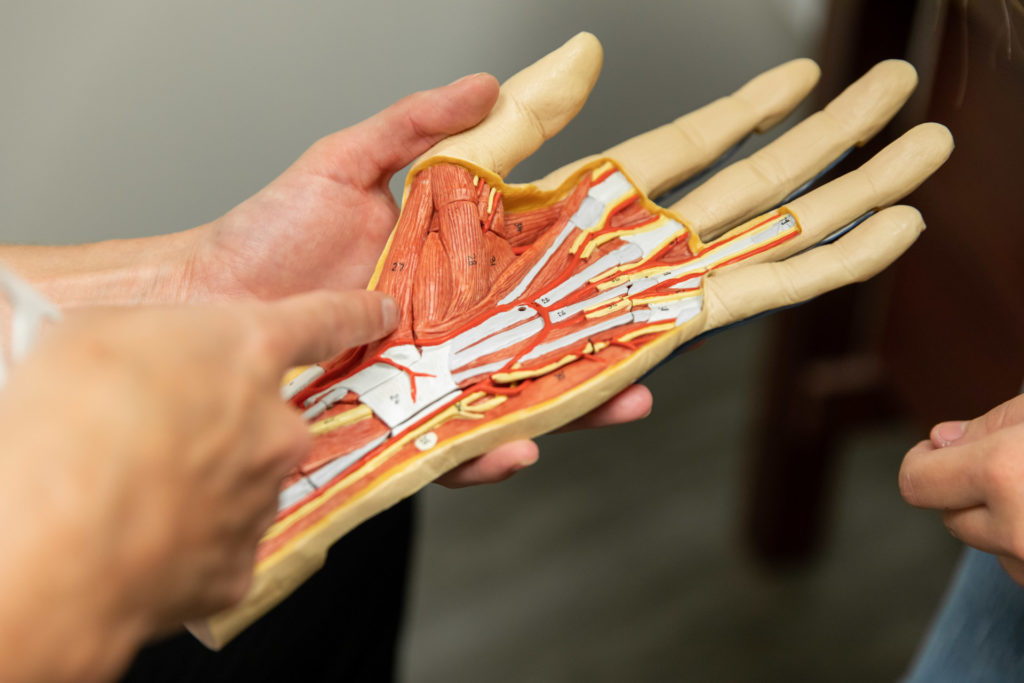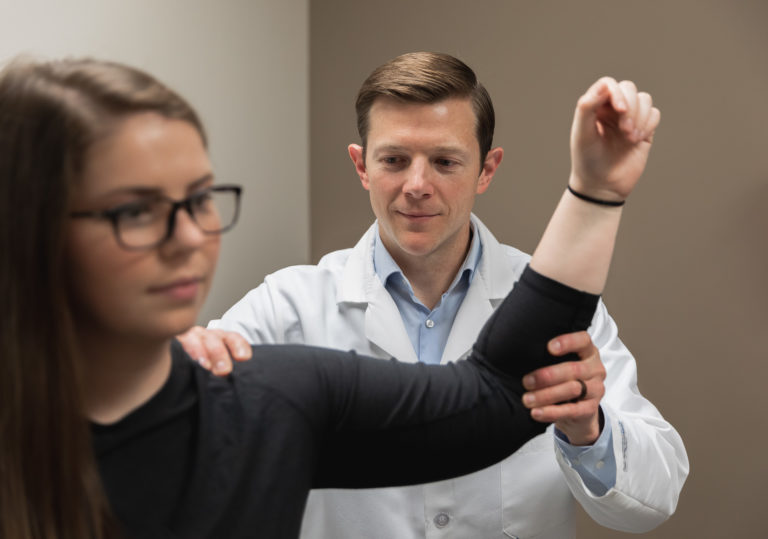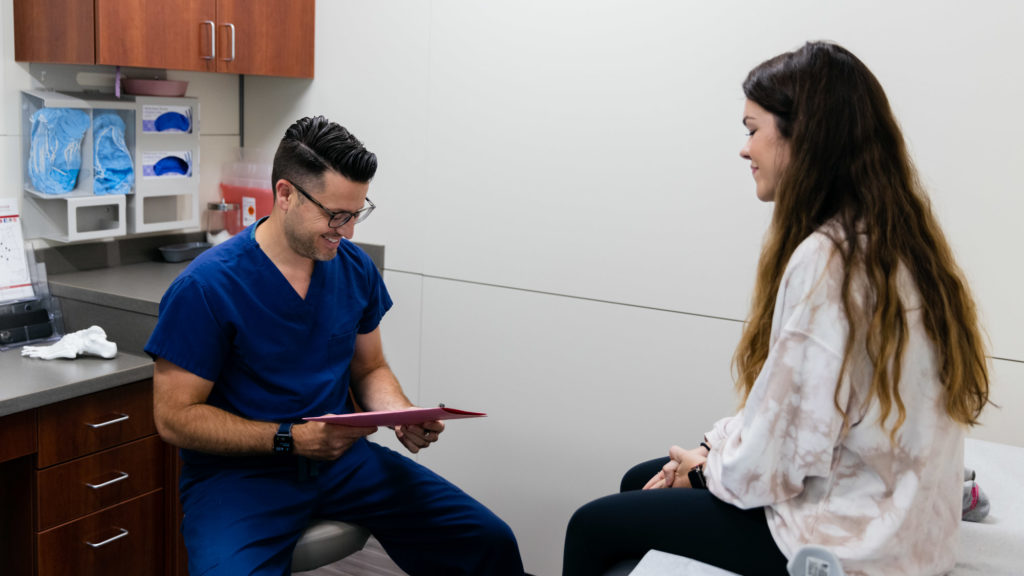

When a musculoskeletal condition requires surgery, you don’t want to allow just any orthopedic surgeon to treat you. Rather, you should find the best orthopedic surgeon in Kansas City to provide the most effective care.
This begins with research and understanding that not all surgeons are the same.
At KCOA, we believe patient education is just as important as providing excellent surgical procedures. By thoroughly explaining our patients’ conditions, treatment options, and what to expect with surgery, we empower them to make the best decision for their needs and lifestyle goals.
Step #1: Determine whether surgery is your best option
For many people, surgery isn’t the only solution to achieve pain-free living. In fact, a great orthopedic surgeon will outline all of your options—both nonsurgical and surgical—then allow you to make the final call.
If a physician ever pressures into surgery without outlining the alternatives, you may want to look elsewhere for options. Specifically, for an orthopedic provider who will keep your wants at the forefront when building your treatment plan.
Depending on your unique musculoskeletal issue, there are many non-operative pain management solutions available that you could try before turning to surgery. This may include:
Physical therapy: Oftentimes, keeping your body moving with the help of a licensed physical therapist or occupational therapist can relieve pain. Movement promotes blood flow and allows the necessary nutrients to help your muscles and joints stay healthy. It also can improve your range of motion to make daily life a lot easier to maneuver. Keep in mind that most professionals recommend physical therapy for patients after surgery.
Pain medications: Pain medications may help manage pain without surgical intervention. Your doctor may recommend a variety of options best suited for you so that you can continue doing what you love.
However, we highly recommend you speak with your orthopedic specialists before you begin taking OTC medications on your own. This is especially true if you plan on doing so for an extended period.
Pain injections: Injections directly into the joint can be a long-term solution where you would only have to return every few months. For many people, such as those with arthritis pain, injections alone can make pain a lot more manageable.
Casting and/or bracing: If you have a fracture, casting or bracing is usually enough to allow the bone(s) to heal in proper alignment. During this time, it is important to remain in your cast and avoid getting it wet for optimal recovery.
Regenerative medicine: Regenerative medicine involves using substances from your body (i.e. platelet-rich plasma or stem cells) to regenerate damaged tissue. For mild-to-moderate conditions, this can help treat the condition while reducing pain.
In most cases, your orthopedic surgeon will only recommend surgery after you have exhausted all other measures. For some extreme cases, surgery may be the best solution right away. Ultimately, choosing to undergo an invasive procedure should be your decision, and the best orthopedic surgeon in Kansas City will understand that.
Have an acute injury? Learn more about our orthopedic urgent care.
Step #2: Understand the types of surgeries an orthopedic surgeon performs
Of course, there isn’t a single surgery that will work for all people and all conditions. Even if someone you know has the same condition as you, their surgery could be slightly different than your own. While your orthopedic surgeon won’t expect you to know every detail, it will help to understand some of the basics.
A few common procedures include (but are limited to):
Arthroscopy
Arthroscopy is a scope-based surgery used for the hip, knee, shoulder, and even elbow. Unlike open surgery, arthroscopy procedures don’t require large incisions. This can make healing, recovery, and pain management easier. With an arthroscopy, your provider can treat and repair a variety of conditions.
We understand that surgery may be a scary choice, but most patients who undergo an arthroscopy can recover at 100%. To maximize your chances for an optimal outcome, it’s best to get as healthy as possible before any type of surgery.
Shoulder: During your shoulder arthroscopy, you will remain under general anesthesia. After creating a small incision, your orthopedic surgeon will insert a tiny camera (arthroscope) into the shoulder joint. This camera provides a clear guide for the surgical instruments. Saline-based fluid flows through the arthroscope to keep the image clear and bleeding minimal.
Knee: During a knee arthroscopy, your orthopedic surgeon creates small incisions to insert a scope (camera) into the knee joint. Additionally, a saline-based solution will maintain the imaging clarity. Based on the severity of your knee injury, your doctor may invoke a variety of different methods. This includes repairing the ligament, smoothing surrounding cartilage, removing inflamed tissue, reshaping the joint, and more.
Hip: Unlike other procedures such as a knee scope, hip arthroscopy is a newer procedure. Adding traction (the method of slightly pulling down the leg bone to create a viewable space between the hip joint) made hip arthroscopy a lot more successful than in previous years. The space is crucial for the camera to take images of the joint and discover abnormalities.
During your outpatient procedure, your orthopedic surgeon will make a small incision, create traction, then insert the arthroscope. After accessing the hip problem and the labrum (a ring-shaped ligament in the hip), the repair process begins.
Joint Replacement
Most people undergo a total joint replacement due to osteoarthritis complications. Osteoarthritis comes from the wear and tear of the cartilage that surrounds joints. Cartilage plays an important role in how your joints move and feel by creating a layer of protection against direct joint connection. Therefore, a lack of cartilage can lead to inflammation and joint degeneration.
A total joint or partial replacement replaces the damaged arthritic joint with an artificial prosthesis. Made from metal, plastic, or ceramic, the artificial joint effectively mimics the motion patterns of a healthy joint to improve your range of motion. Most commonly, people receive total joint replacements on their hips and knees.
After your joint replacement surgery, it is crucial for you to take care of your body. If you return to a sedentary lifestyle, you won’t be doing yourself much good. The best results come from dedication to your post-operative plan. This may include exercise, physical therapy, and generally remaining mobile.
Your Quick Guide to Knee Joint Replacement Surgery
Carpal Tunnel Surgery
Carpal tunnel syndrome is a type of nerve compression involving the median nerve (one of two major nerves in the hand). In an ideal anatomical course, nerves travel in smooth tunnels cushioned between muscles, ligaments, and bones. When those spaces around a nerve narrow, it can cause nerve compression and irritation. This leads to issues such as pain, numbness, and weakness.
If conservative options don’t alleviate pain, surgery may be your best treatment option to relieve pressure on the nerve. You will wear a bulky dressing after surgery, but you can move your fingers immediately (do not overuse your hand). Three days later, your orthopedic surgeon will remove the bulky dressing and replace it with smaller gauze. At this time, you can get your wound wet in the shower.
Once you hit around 7 to 10 days post-op, your surgeon will remove your sutures. However, you still want to avoid heavy gripping or lifting for about a month. While your body heals, you may have lingering tenderness in the palm. After three months, the scar begins to flatten out.
Throughout the healing process, it’s important to avoid bandaids and/or ointments since they keep the area too moist to heal properly.
Brostrom Ligament Reconstruction
Brostrom-Gould lateral ligament reconstruction treats chronic ankle sprains. About 95% of the time, people recover from ankle sprains and return to their normal activities. However, sometimes a person may have neglected proper treatment or failed to rehab the joint. When that happens, ligaments can’t repair themselves due to lack of joint protection. If you keep spraining your ankle due to major instability, then surgery is often the best bet.
Surgery begins with an arthroscopy. Your surgeon will guide a small camera into the joint to clean up scar tissue. After, he or she makes a small incision (about 2 to 3 inches) over the ligaments at the lateral ankle. From there your surgeon repairs the Anterior Talofibular Ligament (ATFL) and CalcaneoFibular Ligament (CFL).
Typically, repairing the ligaments includes sutures, then reinforcing those sutures with a covering over the tendons at your ankle. In some cases, a surgeon may add more reinforcements via an internal brace—a suture attached to two screws stretching from the talus (ankle bone directly under the shin bone) to the fibula (smaller leg bone lateral to the shin bone). Patients who are obese or have loose ligaments may require an internal brace.
Step #3: Make sure your orthopedic surgeon considers your finances and budget
Medical treatments could cost a lot of money, especially for those with high deductibles. Many people don’t think about cost factors when choosing an orthopedic clinic. It’s normal to think that better care equates to higher costs. However, that’s not always the case.
Some people have the impression that when visiting a university hospital (or other large hospital), they are getting better orthopedic care. This is often due to advertisements and higher visibility. The truth is, private-practice physicians have completed their fair share of training and can provide equal, if not better service.
Bottom line: Private-practice orthopedic clinics like KCOA provide the best value for your care without compromising quality. You also want to remember that just because a clinic costs more it doesn’t mean you are receiving the best care.
For example, a $22,000 MRI typically has nothing to do with the quality of the study, rather the location of the study. Since private-practice based orthopedic clinics aren’t tied to a singular facility or hospital, they aren’t required to choose more expensive facilities for testing. Large hospitals don’t charge more because they have higher quality imaging technology; pricing often stems from facility fees and other avoidable charges.
Knowing that, our KCOA physicians can choose imaging centers at a fraction of the cost. In fact, we have found imaging centers with better MRI magnets. In addition, the physicians reading the exams have completed fellowships in musculoskeletal radiology. This makes them more trained than many of their counterparts.
Find the best orthopedic surgeon in Kansas City at KCOA
The core of our success lies in proper diagnosis. An appointment with one of our providers includes the highest quality technology to pinpoint a patient’s underlying musculoskeletal conditions. From there, we can better understand which treatment will work best for you.
KCOA’s private practice model ensures our physicians can provide patients with the most value that doesn’t involve hidden fees or outlandish pricing.
For a thorough evaluation, call us at 913.319.7600 or schedule an appointment today.


